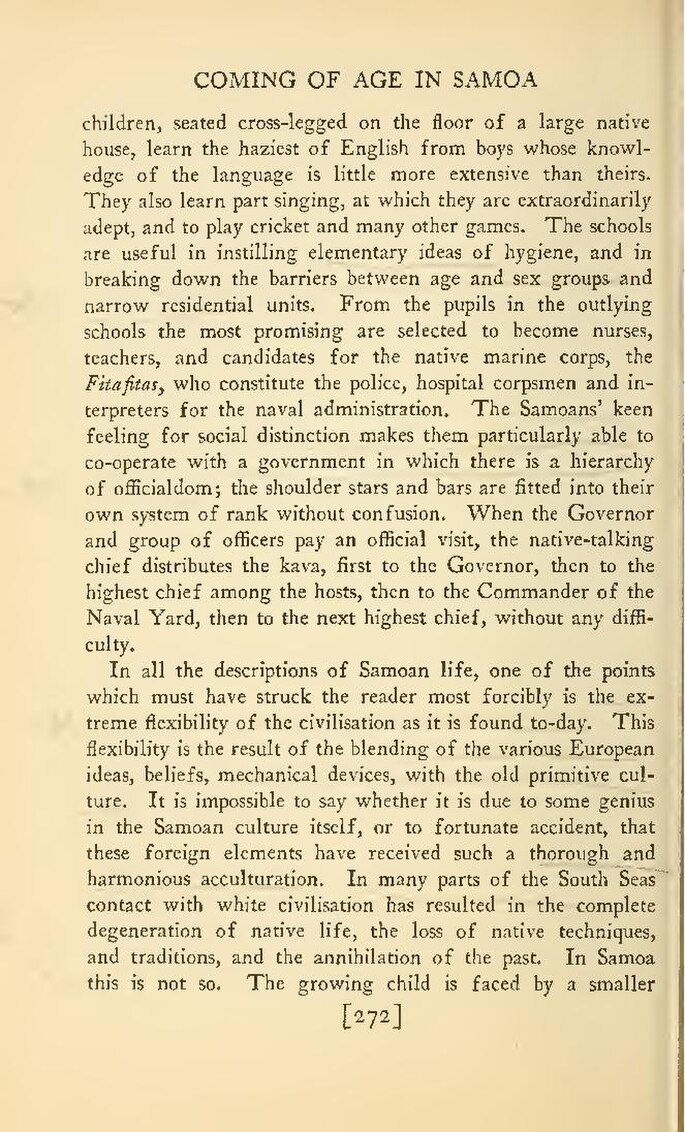Coming of Age in Samoa
children, seated cross-legged on the floor of a large native house, learn the haziest of English from boys whose knowledge of the language is little more extensive than theirs. They also learn part singing, at which they are extraordinarily adept, and to play cricket and many other games. The schools are useful in instilling elementary ideas of hygiene, and in breaking down the barriers between age and sex groups and narrow residential units. From the pupils in the outlying schools the most promising are selected to become nurses, teachers, and candidates for the native marine corps, the Fitafitas, who constitute the police, hospital corpsmen and interpreters for the naval administration. The Samoans' keen feeling for social distinction makes them particularly able to co-operate with a government in which there is a hierarchy of officialdom; the shoulder stars and bars are fitted into their own system of rank without confusion. When the Governor and group of officers pay an official visit, the native-talking chief distributes the kava, first to the Governor, then to the highest chief among the hosts, then to the Commander of the Naval Yard, then to the next highest chief, without any difficulty.
In all the descriptions of Samoan life, one of the points which must have struck the reader most forcibly is the extreme flexibility of the civilisation as it is found to-day. This flexibility is the result of the blending of the various European ideas, beliefs, mechanical devices, with the old primitive culture. It is impossible to say whether it is due to some genius in the Samoan culture itself, or to fortunate accident, that these foreign elements have received such a thorough and harmonious acculturation. In many parts of the South Seas contact with white civilisation has resulted in the complete degeneration of native life, the loss of native techniques, and traditions, and the annihilation of the past. In Samoa this is not so. The growing child is faced by a smaller
[272]
